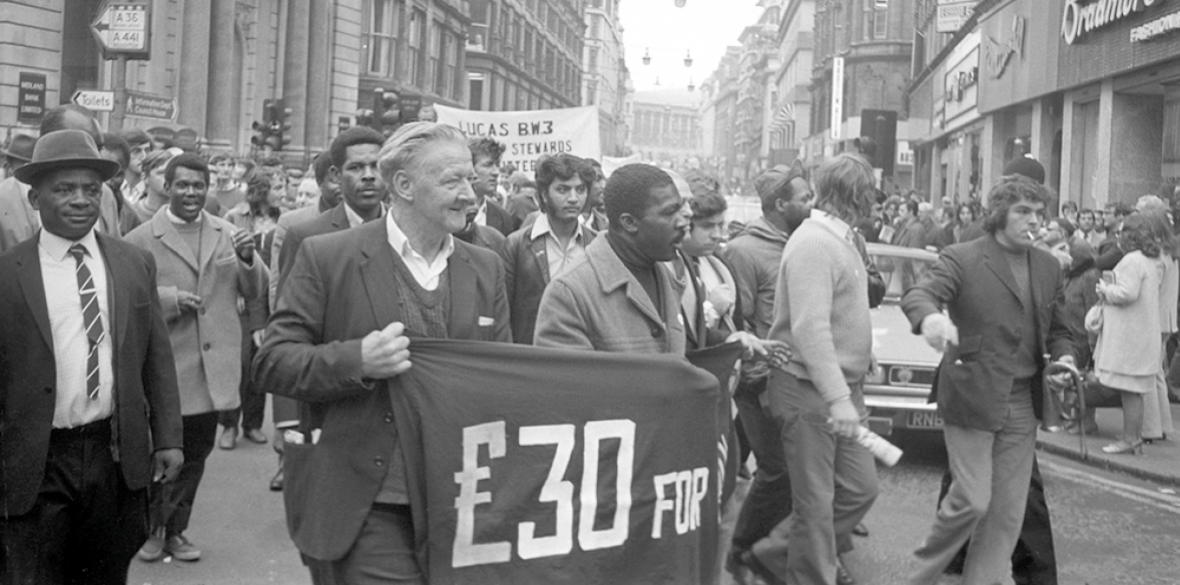This is the last article you can read this month
You can read more article this month
You can read more articles this month
Sorry your limit is up for this month
Reset on:
Please help support the Morning Star by subscribing here
THIS year is the 50th anniversary of the many industrial disputes that took place in 1972, when trade unionists stood up to defend pay, jobs and working conditions. They included coal miners, dock workers, engineers and railway workers.
The late Bob Crow remarked: “Everyone keeps saying that we are going back to the 1970s. What was wrong with the 1970s?” The significance of these disputes is that they all succeeded, even though workers faced employers who were backed up by Ted Heath’s right-wing Tory government.
June 26 marks the anniversary of the start of Britain’s first and only national building workers’ strike. It was long overdue. The construction industry was notable for low pay and high accident rates. The employers were encouraging the spread of casual employment, known as “lump labour,” to cut costs and to undermine trade union membership and organisation.
The main unions of craft workers had recently merged to form the Union of Construction, Allied Trades and Technicians (Ucatt, now part of Unite). Together, with three other unions in the industry, the T&GWU, GMWU and FTAT, they put forward a claim that included a basic wage for all building workers of £30 for a 35-hour week, improved holidays and sick pay.
The four unions formed a National Action Committee to organise the strike. Regional and local action committees were also set up to co-ordinate the strike and picketing.
A significant influence on the development of the strike, particularly through the local action committees, was the Building Workers’ Charter.
This was a rank-and-file grouping that had been set up by building workers in 1970 to campaign in the unions for a progressive charter of policies to transform the industry and the lives of building workers.
Communist Party building workers played a leading role together with many independent socialists. It produced a regular paper which was sold by these activists on sites throughout the country.
The strike began on a selective basis. In each region, 10 or so building sites were identified where the employer was under pressure to complete the project. The workers on those sites would be called out on strike from June 26.
Apart from picketing their own site, strikers would also visit other sites to explain the dispute and to encourage workers to join a union if they weren’t members.
If an employer conceded the claim an agreement would be signed and the members would return to work, to be replaced by strikers from another site. Union members who were not out on strike would pay a levy of £1 per week to maintain funds for strike pay.
The unity and confidence of members developed quickly. By the end of July many were not prepared to carry on working and simply pay a levy.
They wanted to strike too as this would maximise the pressure on the employers. When a further improved offer was rejected by members in the first week of August, despite Ucatt’s leadership declaring that it would be accepted, the unions declared an all-out strike, but without strike pay.
Daily meetings of building workers, often in the open-air, would identify sites that were still known to be working in their areas. They adopted the successful tactic of the miners, of flying pickets. They travelled in cars, and sometimes by coach, to working sites to explain that all building workers were on strike and all work should stop.
In late August, the south-west region reported that there were now more workers on strike in their area than the number of union members two months earlier. Strike action proved to be an inspiration to workers in an industry marked by employer intimidation and harsh working conditions.
The strike ended on September 18 when the unions accepted a new offer of a basic rate of £26 followed by further increases over the following two years.
The Charter group and many activists opposed the settlement, and in Liverpool the strike carried on for a further week, but their overwhelmingly feeling was that this was a great victory for building workers — that it could be a springboard for increasing trade union membership and organisation on sites.
This would be the bedrock on which to continue the fight to eradicate lump labour and secure other demands. Strike action had created a strong sense of solidarity among all building workers, breaking down distinctions between different trades and between skilled and unskilled.
The employers recognised this too and were determined to stop it. The prosecution of north Wales building workers at Mold and Shrewsbury a year later was part of that employers’ counter-offensive — and this will be the subject of a further article in the Morning Star.
Eileen Turnbull is the researcher and secretary of the Shrewsbury 24 Campaign and the author of A Very British Conspiracy: the Shrewsbury 24 and the Campaign for Justice to be published by Verso in September.









